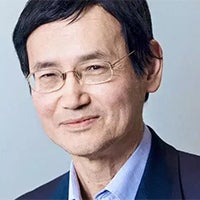When hazard events occur, substantial resources are often committed to find out what happened, and investigate the factors that led up to them. Rarely is there a systematic investigation of downward counterfactuals, addressing the question: how could the loss consequences have been more severe?
On October 31, 1999, an Egyptian pilot, Gameel Al-Batouti, deliberately crashed EgyptAir 990 into the Atlantic, en route from JFK to Cairo. Batouti had waited to be alone in the cockpit of the Boeing 767, and had intentionally manouvered the airplane to its destruction, switching off the engines. His last words, repeated several times, were, ‘I trust in Allah’.
A downward counterfactual thought experiment to discover alternative increasingly worse scenarios would consider the plane crashing into a field, a suburb, a city – and into a skyscraper. Terrorism risk analysts need to perform such thought experiments, because terrorists do. As observed by his aide-de-camp, Nasir Al Wuhayshi, Osama bin Laden himself had the downward counterfactual thought that if a passenger jet leaving JFK could be ditched into the sea through malicious pilot action, it could also be flown into a New York skyscraper. Less than two years after Al-Batouti crashed his Boeing 767 into the Atlantic, killing himself and all 217 passengers and crew, two more Boeing 767s crashed into the Twin Towers of the World Trade Center on 9/11.
At 7.32pm local time on Friday, August 10, 2018, Richard B. Russell, a Horizon Air ground service agent with no pilot’s license and no authorization to fly, took off in a 76 seat Q400 Bombardier turbo-prop plane at Seattle-Tacoma International Airport. After joy-riding in the air for about an hour, chatting away to air traffic control, he crashed the plane on the barely inhabited Ketron Island, south of Seattle, between Tacoma and Olympia. Within minutes of the plane’s takeoff, the military had scrambled two armed F-15 jets to fly alongside him.
Richard Russell was no terrorist, but terrorists around the world would have been watching. It is well known that terrorists have managed to obtain jobs in secure areas of major airports, rather like Richard Russell. The fact that a lowly 29 year-old ground staff employee could take off in a plane without any authorization will horrify and shock counter-terrorism officials – and insurers everywhere. Counterfactually, Richard Russell could have headed straight for downtown Seattle, and flown the Bombardier plane into a skyscraper, maybe even striking the famous Space Needle.
Flight security since 9/11 has strengthened enormously to the extent that the hijacking of a flight by terrorist passengers is very hard to imagine. It is not so hard to imagine now that a plane could be hijacked on the ground by a suicide pilot and flown into a skyscraper.






